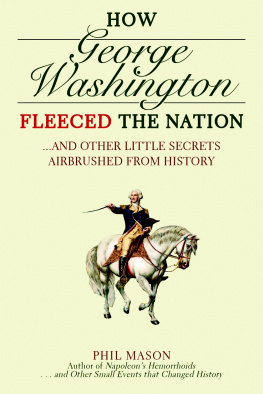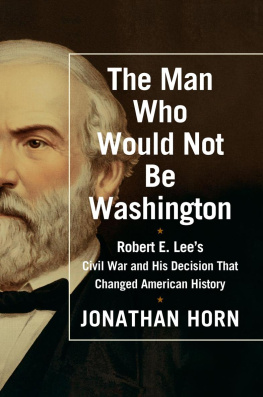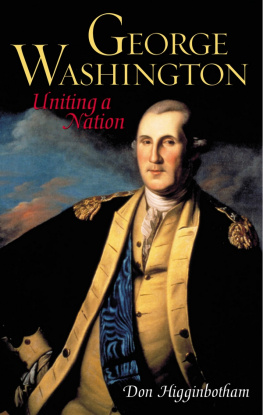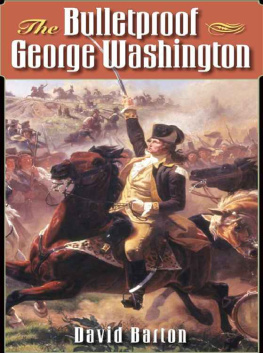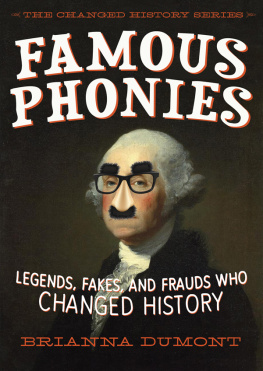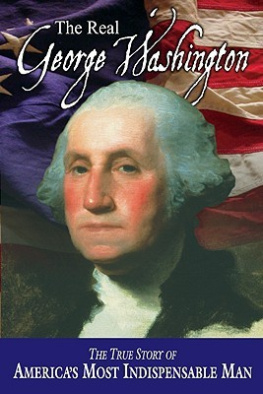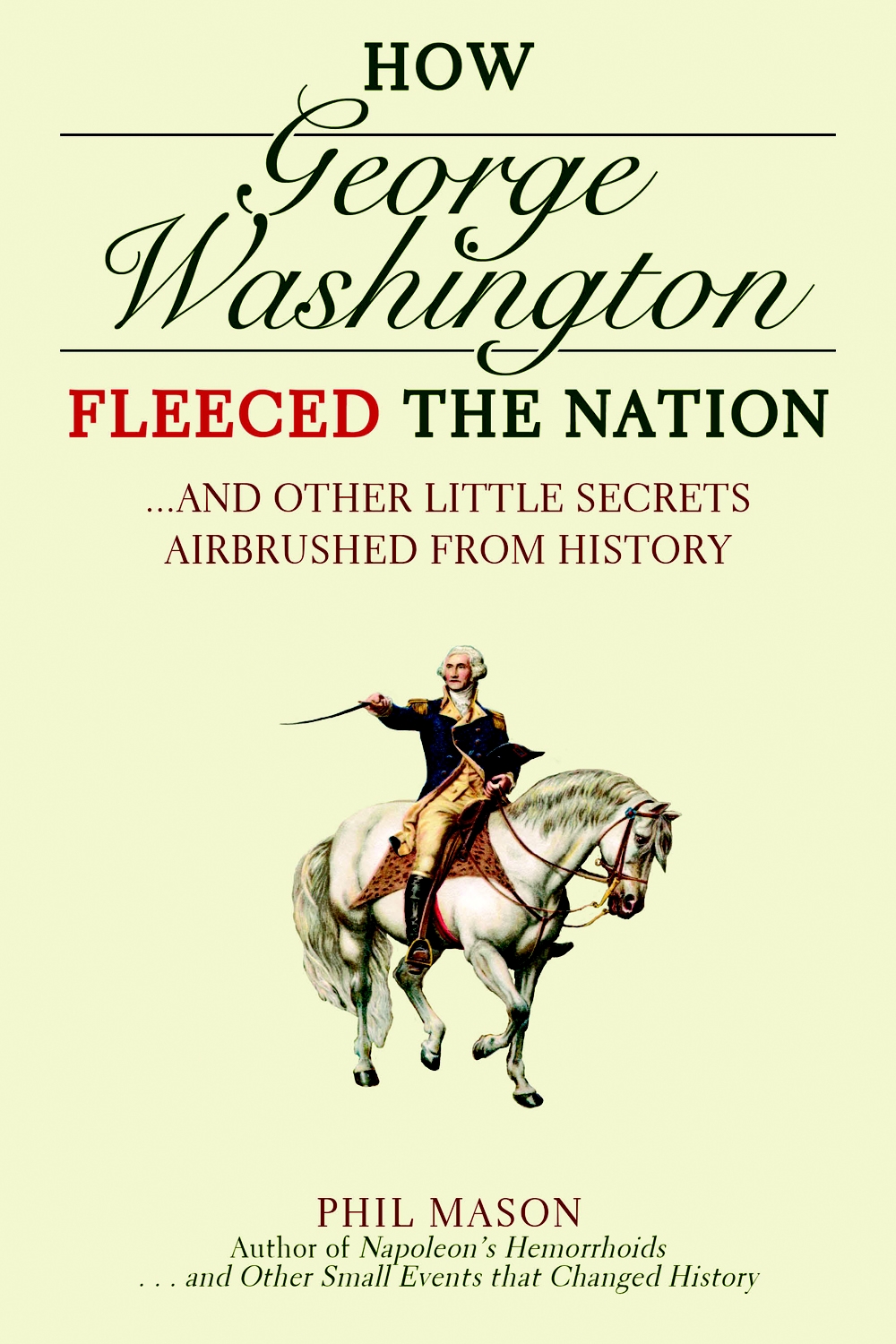History has granted some individuals heroic status for their achievements and influence on the world. The characters that have been passed down to us by our forebears are, however, not quite what they seem. This chapter looks at some of our most revered figures, but from a perspective that your teacher is unlikely to have told you about.
SANTA CLAUS THE REAL THING?
While Father Christmas , the Western worlds most iconic figure of childhood, has a genuine religious pedigree, the image we carry today of the yuletide deliverer has a darker and less saintly origin: Coca-Cola. The archetypal Santa Claus that epitomises Christmas for us is, in fact, the invention of an advertising campaign. And still more unexpectedly, it was as recent as 1931.
The patron saint of children, 4th-century martyr St Nicholas became associated with gift giving as long ago as the 12th century. His feast day 6 December gradually superseded the traditional pagan practice of exchanging presents at the years end festival of Saturnalia. So far, so good. But for all the generations of children who have ever wished for Santas call, it is only the last three or four who have conjured up the visage of the rotund, bearded old man clad in a red tunic, trimmed with fur and topped off with a bobble-tailed hood.
Very Different Beginnings
Until the mid-Victorians, the image of Santa was very different. The figure was not universally portrayed in red. His suit was more often green, or simply entirely comprising animal furs. In an American depiction of 1858, he does not even have a beard. There was no association with a reindeer-driven sleigh. It was America that was to mould the image towards our present one. Its penchant, first for PR and then for commercial exploitation, brought the image into modern focus, starting with the Civil War.
The earliest modern depiction of Father Christmas, by illustrator Thomas Nast, appeared in the January 1863 edition of Harpers Weekly (A Journal of Civilization) showing a patriotic Santa clad in the Stars and Stripes, perched on a sleigh pulled by reindeers and dispensing gifts to Union soldiers.
By the 1880s, commercial US greetings cards were standardising the full, round figure clad in red. But the polished image of today jolly, red-cheeked face, flowing white beard, bright red suit, black belt and boots and the fur-edged nightcap hat finally appeared in Coca-Colas 1931 campaign to promote its soft drink. It was painted by a 32-year-old advertising artist and immigrant from Sweden, Haddon Sundblom, who had been on the Coca-Cola account since 1924. By the 1940s, he alone was producing half of the companys entire advertising art. Sundblom fixed on the red and white scheme simply because it was already Cokes house colours.
Commerce Dictates Design
The 1931 campaign, which has left its indelible cultural impact, was motivated by two very down-to-earth considerations. First, the reason for having a campaign at all was to try for a gear change in peoples perception of the drink, to persuade consumers to drink Coke all year round and not just in summer. Hence the campaign being launched at the height of winter, an advertising pitch that must have seemed rather off key to a company marketing a cooling beverage. Second, they picked the Santa character because the campaign was unashamedly targeted at increasing sales to children and at the time it was actually illegal to show children themselves drinking the stuff because of the cocaine derivatives which used to be part of the drinks recipe.
So from these two very practical and self-interested commercial motivations, our modern view of Santa Claus derives. In view of the commercialisation of Christmas itself over the last decades, it might seem all too appropriate to discover these less than pious origins to the figure that is the very personification of it all.
ROBIN HOOD YOUNGER THAN YOU THINK
Another example of a cultural icon commonly believed to have a far longer pedigree than in fact they enjoy is Robin Hood . Unravelling his true history has exercised the talents of a steady stream of historians down the centuries. Modern research over the last 30 years has shown that almost every facet of the story that we think we are familiar with turns out to have been added after the tale first appeared, and sometimes surprisingly recently.
The earliest written reference to the existence of Robin Hood comes from William Langlands Piers Plowman , which is thought to have been completed around 1387. It is simply a passing mention and appears to be referring to already well-known stories about the character. The first piece of false memory is our traditional view that Robin Hood takes up his fight in the 1190s against authority in the shape of John, governing England while his brother Richard I, the Lionheart, is away at the Crusades. The earliest stories of Robin Hood in fact place him no earlier than the reigns of the early Edwards, between 1272 and 1377, around a hundred years later.
Late Additions
According to what has come to be regarded as the definitive work on Robin Hood, published in 1982 by James Holt, Professor of Medieval History at Cambridge, the first reference to Robin being a good man does not come for another half century after Piers Plowman , by a sheriff clerk writing in 1432. The idea that Robin Hood was a nobleman (supposedly the rightful Earl of Huntingdon) temporarily down on his fortunes did not appear until the first half of the next century, and Maid Marian did not join the tale until after 1500.
Perhaps the most unexpected discovery relates to the bit about Robin Hood that we are likely to think we know the best. Surprisingly, in the early telling of the tales Robin Hoods fame comes from his bravado in flouting authority, not his acts of banditry. That he stole from the rich to give to the poor only starts to feature in the 16th and 17th centuries, and the perfection of the formula as Robins defining purpose, believe it or not, was inserted in Victorian times.
AN INVENTED CRIMINAL HERO
Gentleman highwayman Dick Turpin enjoyed a reputation not dissimilar to Robin Hoods for much of the 18th and 19th centuries. Romanticised by legend and music-hall ballads, his claim to fame came from his daring 15-hour ride from London to York on Black Bess to give himself an alibi against a crime for which he risked arrest. Harrison Ainsworth, long forgotten now but a hugely successful Victorian author, is largely responsible for cementing this image of Turpin into the popular mind through a successful novel published in 1834. The trouble was that he attributed to Turpin the antics of someone else.
Historians are now satisfied that the ride to York was completed by a Pontefract highwayman, John Nevison, who lived 50 years before Turpin. It is far from clear how Ainsworth came to do this, whether by accident or literary licence to embellish his story. The bit about Black Bess dying exhausted having delivered her master to his destination was entirely made up by Ainsworth.
Turpin, who did end his days in York, being hanged there in 1739, is more accurately described as a squalid little horse thief.

